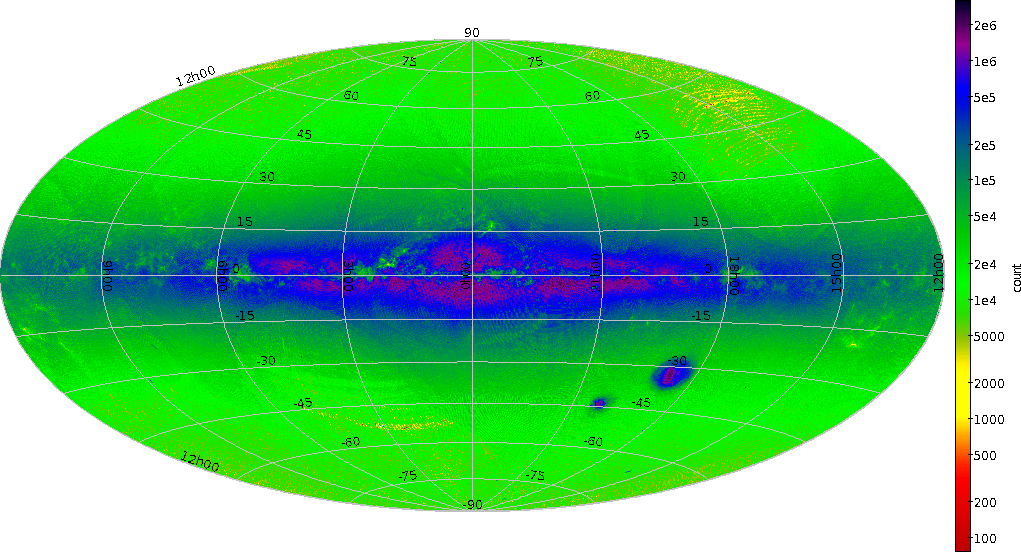Gaia Data Release 1 (GDR1)
Content
- Positions (α, δ) and G magnitudes for all sources with acceptable formal standard errors on positions. Positions and individual uncertainties are computed using a generic prior and Bayes’ rule (detailed description in “Gaia astrometry for stars with too few observations. A Bayesian approach”).
- The five-parameter astrometric solution – positions, parallaxes, and proper motions – for stars in common between the Tycho-2 Catalogue and Gaia is contained in Gaia DR1. This part of Gaia DR1 is based on the Tycho-Gaia Astrometric Solution (Image of the Week with short TGAS description; paper with a more detailed description; paper describing theory and background; paper describing quasar extension).
- At the beginning of the routine phase, for a period of 4 weeks, a special scanning mode repeatedly covering the ecliptic poles on every spin was executed for calibration purposes. Photometric data of selected RR Lyrae and Cepheid variable stars including these high-cadence measurements are contained in Gaia DR1.
- Positions (α, δ) and G magnitudes for 2152 ICRF quasars (F. Mignard et al., 2016).
Cross-matches will be provided between Gaia sources on the one hand and Hipparcos-2, Tycho-2, 2MASS PSC, GSC2.3, PPM-XL, UCAC-4, SDSS DR10 / DR12, AllWISE, and URAT-1 data on the other hand.
Gaia DR1 is based on observations collected between 25 July 2014 and 16 September 2015.

Density map for gaiadr1.gaia_source (number of sources per square degree). Healpix based (nside 512, 3.14Mpixels)
**Source numbers**
| Total number of sources | 1,142,679,769 |
| Number of TGAS* sources | 2,057,050 |
| – Hipparcos | 93,635 |
| – Tycho-2 | 1,963,415 |
| Number of secondary sources** | 1,140,622,719 |
| Number of light curves for Cepheids | 599 |
| Number of light curves for RR Lyrae | 2595 |
Magnitude distribution percentiles (G)
| 0.135% | 11.2 |
| 2.275% | 14.5 |
| 15.866% | 17.1 |
| 50% | 19.0 |
| 84.134% | 20.1 |
| 97.725% | 20.7 |
| 99.865% | 21.0 |
* TGAS = Tycho-Gaia Astrometric Solution, also referred to as primary solution for primary sources.
** The astrometric solution of secondary sources (non-TGAS sources) is derived using the calibrations of the spacecraft attitude and the geometry of the instrument as `fixed’ input, as derived from the astrometric solution of primary sources (i.e., the TGAS solution).